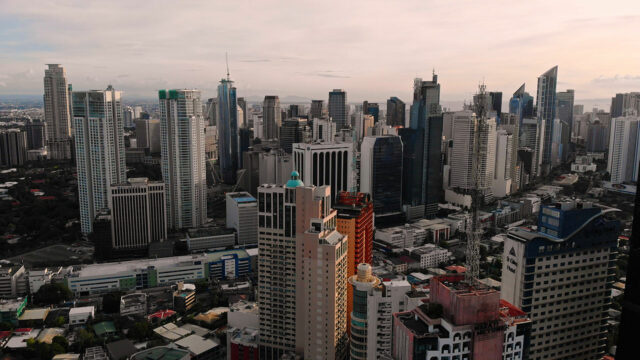Economists expect less optimistic macroeconomic goals

ECONOMISTS expect less upbeat macroeconomic targets when Philippine government economic managers meet to revisit the goals in December, citing the battered peso and persistently high inflation.
“I don’t think that the targets will be as upbeat as before,” Leonardo A. Lanzona, who teaches economics at the Ateneo de Manila University, said in an e-mail last week.
The peso’s depreciation against the dollar and rising interest rates would probably reduce investments and consumption, he added.
“Revisions are warranted especially on debt servicing and transactions involving foreign currency because these are costing us more,” John Paolo R. Rivera, an economist at the Asian Institute of Management, said in a text message.
Economists from First Metro Investment Corp. (FMIC) and University of Asia and the Pacific (UA&P) on Saturday said they expect the Philippine economy to grow by 6.5% this year, which is at the lower end of the government’s 6.5-7.5% target.
On Friday, Socioeconomic Planning Undersecretary Rosemarie G. Edillon said the Development Budget Coordination Committee (DBCC) might revisit macroeconomic assumptions in December.
“It really has to do with the actions of the Federal Reserve, and we’re hoping that is very temporary,” she told a forum.
Increased remittances from Filipinos overseas during the Christmas holidays could boost the peso, she pointed out.
“There are active inflows to our international reserves. We have very strong sources of those reserves, like remittances [and] business process outsourcing,” she said. The recovery in the tourism industry is also a source of foreign currency.
“The seasonal increase in overseas Filipino workers’ remittances and export sales in the fourth quarter could provide some support for the peso exchange rate especially toward the end of the year,” Mr. Ricafort said.
But the US Federal Reserve’s continued policy tightening to quell elevated inflation is a major factor, he said in a Viber message.
Mr. Rivera and Mr. Lanzona said dollar remittances might not be enough to offset the Fed’s hawkish stance.
“This may be significant but not necessarily enough given the aggressiveness of the Fed and given the pressures on inflation to increase due to demand pull and the persistent cost push inflation,” Mr. Rivera said.
“Even today, remittances are being received and yet the depreciation is at its highest levels,” Mr. Lanzona said.
The peso closed at an all-time low of P58.50 a dollar on Friday, a centavo weaker than its close a day earlier, according to data from the Bankers Association of the Philippines.
It has depreciated by 14.71% or P7.50 this year.
“A weaker peso would lead to higher inflation and interest rates — both a drag on economic growth and government spending,” Mr. Ricafort said. A weaker peso would also cut foreign borrowings by the government, he added.
BPI Lead Economist Emilio S. Neri, Jr. expects the peso to breach P60 a dollar by the fourth quarter or early next year if the Philippine central bank “continues to hike too gradually.”
“At P60, it will give us even less space for ‘Build, Build, Build,’” he said in a Viber message. “Expenditures for human capital development such as health and education could remain in the backseat as debt service takes a greater share of the budget pie unless we really see a massive growth in private sector investments.”
First Metro and UA&P economist expect consumer spending to pick up after 800,000 new jobs were added in July and as 70% of the population benefits from a weak peso.
“While inflation above 6% may cut into consumer spending, the significant peso depreciation puts more money in the hands of overseas Filipino workers’ families, business process outsourcing workers, and [exporters] and their suppliers,” they said.
These could offset the negative impact of inflation and help the economy expand by 6.5% in the last quarter, they added.
In July, the DBCC set its inflation assumptions at 2.5-4.5% for next year and 2-4% for 2024.
“In 2023, it will already be lower, but we realize that there are still challenges, especially with respect to external pressures like fuel prices,” Ms. Edillon said. “For our part, it’s really about addressing food security, especially for the most vulnerable.”
Socioeconomic Planning Assistant Secretary Sarah Lynne Daway-Ducanes told the same forum crude oil prices are expected to go down in the latter part of the year, which could help stabilize inflation.
First Metro and UA&P said the government has some legroom for spending since the budget deficit narrowed by 9.1% to P761 billion in the seven months to July.
“The National Government has a leeway of nearly P900 billion from total budgeted deficit for 2022, although we think the administration won’t use all that to retain some fiscal space for this and the coming years,” they said, citing slower spending growth and a 22.2% growth in taxes.
Headline inflation eased to 6.3% in August from a near four-year high of 6.4% in July, bringing the eight-month average to 4.9%. — Diego Gabriel C. Robles
